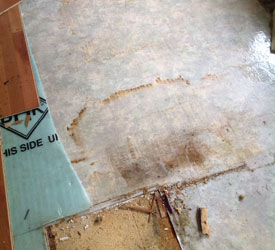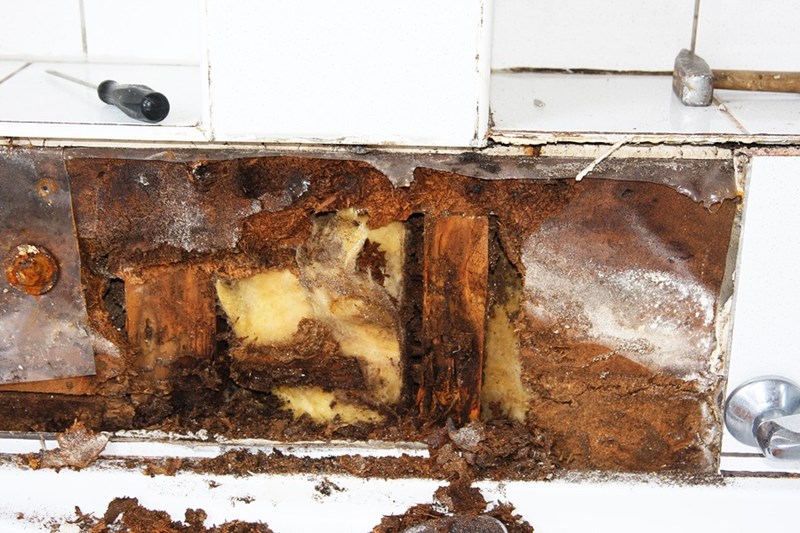Every person seems to have his or her own thinking on the subject of How to Fix a Water Damage Bathroom.

The shower room is exceptionally at risk for moist accumulation and potential water damage due to the regular use of water in it. This short article provides basic assessment strategies to assist finding water damages threats.
The constant use water in the shower room makes it very vulnerable for moist accumulation and also possible water damages. By evaluating it on a regular basis, you can minimize water associated damages.
The complying with set of inspections is easy to perform and also need to be done as soon as in every 3 months in order to maintain your restroom in good shape and to stop possible water problems triggered by the tub, the shower, pipe joints and plumbing, sinks, closets, as well as the bathroom
Do not overlook performing these inspections and also be complete while doing them. Keep in mind that these simple examinations can conserve you a lot of money by giving very early indicators for water damage
Sinks and also Cabinets
Sinks as well as cabinets are revealed to dampness as well as humidity day-to-day and are often neglected. Inspect consistently under the sink as well as on the counter top over it. Fix any drip in the catch as it may suggest drainpipe problems. Look around the sink, sluggish draining pipes might suggest a blocked drainpipe. Change sink seals if they are broken or loosened.
Tub and Shower
The shower and also tub call for special attention as well as maintenance. Examine the tiles and also replace if fractured. Make sure that there is no missing out on grout in between the tiles. Evaluate and change broken caulking at joints where the wall surfaces meet the flooring or the bathtub. Obstructed drains and also pipelines problems will certainly prevent the bath tub from drying as well as may suggest significant issues under the bathtub. Seek advice from a professional promptly to stop structural damage. Focus on stainings or soft areas around the tub wall surfaces as they might indicate an interior leakage.
Plumbing
Signs for water damages are hard to discover given that the majority of pipelines are installed inside the wall surfaces.
Pay unique attention to flooring and also walls wetness and also stains as they may suggest an unseen plumbing problem. Inspect wetness degrees in adjacent areas as well.
The Toilet
The bathroom is a prone water joint. Examine the water lines and also search for leaks around the toilet seat, in the hose pipe, as well as under the water tank. If you discover any type of indicators of moisture on the floor around the bathroom, look for leakages in the toilet edge and tank seals.
Know that hanging bathroom dish antiperspirants increases the possibilities for blockages.
Water Damage Signs In The Bathroom To Avoid Cleanup
Musty smell
This is one of the easiest signs to catch because musty smells are so odorous. The damp, earthy, moldy smell should be a big red flag. The smell will develop when moisture gets trapped in surfaces, and begins to facilitate mold growth. Leaking pipes under cabinets, inside walls, and behind shower fixtures will cause moisture to stay trapped and not dry, which will lead to mold growth and spread. As soon as you notice any musty smells in your bathroom, have it checked for hidden water damage and cleanup signs.
Visible mold
If the smell isn’t there to give it away, sometimes you will actually see mold growth. Finding mold in your bathroom is a serious problem, because mold is very harmful to your health. By the time mold growth is visible, it also means that water damage has already occurred and been present for some time. The only way the mold problem can be resolved is to find the source of the moisture and get it stopped. To safely and adequately remove mold, you need to have professionals handle the remediation. Do not waste any time in getting mold problems addressed, fixed, and sanitized so that you can protect you and your family from the many respiratory symptoms caused by mold exposure.
Damaged floors
Bathroom floors should be able to withstand some exposure to water while still remaining in good condition. However, when excess exposure or water leaks occur, they will begin to damage even the most water-resistant flooring. If you notice any cracking, bubbling, staining, or warping on your bathroom floors, there is probably a water leak somewhere causing the distortion. If you notice areas of the floor have become softer, or even have a spongy feeling, there is probably damage to the subfloor. Subflooring is typically made up of plywood. When plywood is exposed to water or moisture, it will absorb it. Once it has become saturated, the weight of the excess water will cause the wood to swell and soften. Check the floors in your bathroom frequently to catch any of these sings before they lead to damaged subflooring.
Changes on walls
When water leaks behind walls, it will cause changes in the drywall. Peeling plaster, blistering paint, and soggy wallpaper are all good indicators that excess water is building up behind the wall. Water leaking behind drywall will cause it to swell and be soft to the tough. If you start to notice gaps along the trim of your walls, or where tile meets the wall, it could also be a strong indicator that there is a leak behind the wall. Any changes, distortion, or damage on the walls should be evaluated as soon as you notice it to prevent further water damage and cleanup.

As an enthusiastic person who reads on How to Repair and Prevent Bathroom Water Damage, I imagined sharing that piece of content was important. Sharing is caring. You won't know, you may be doing someone a favor. Thanks for your time. Don't forget to visit our blog back soon.
This Post